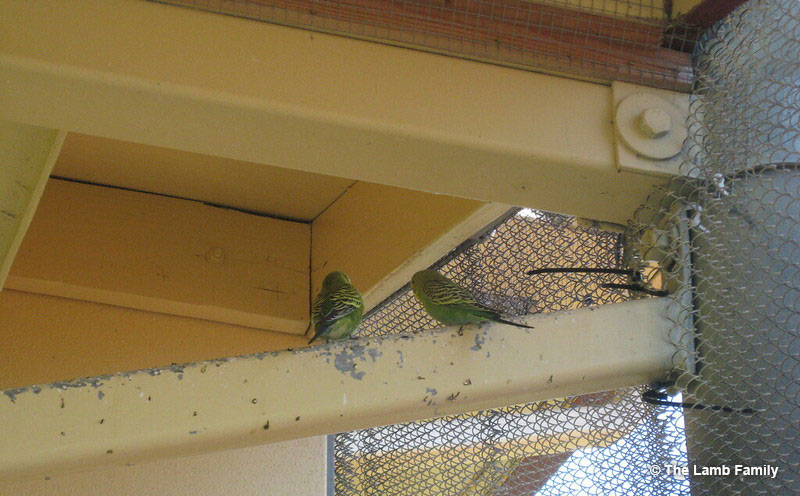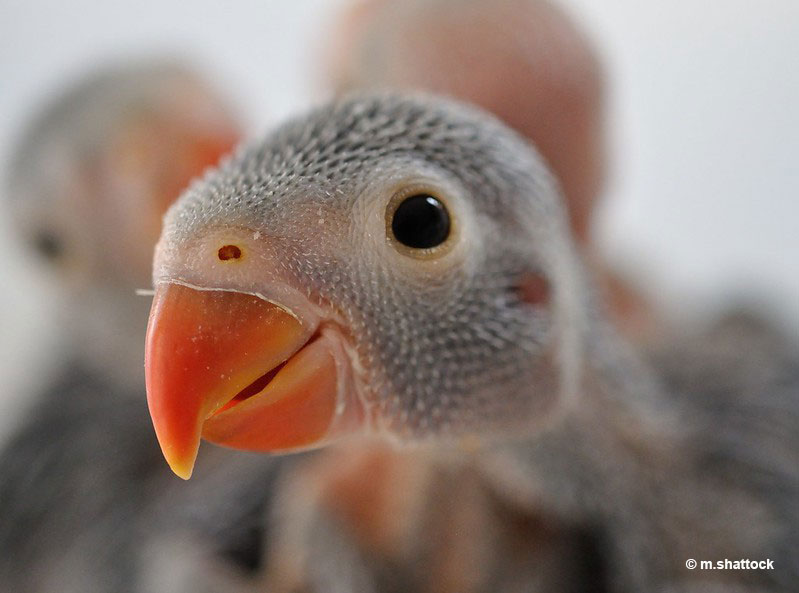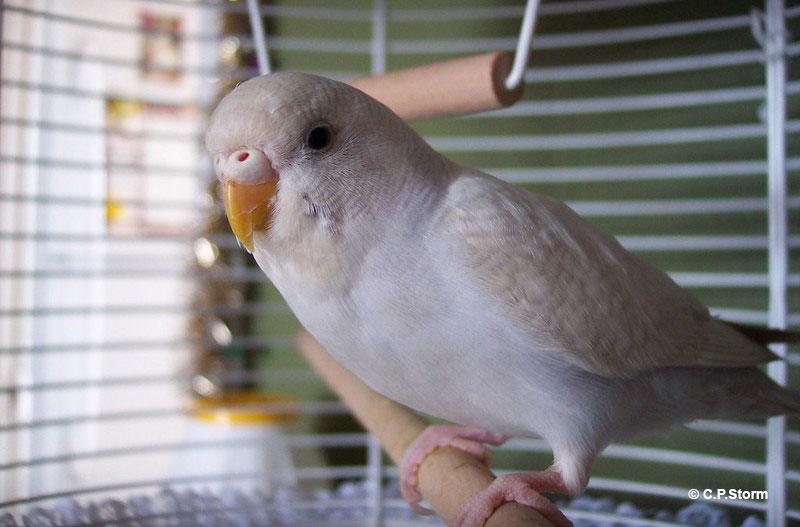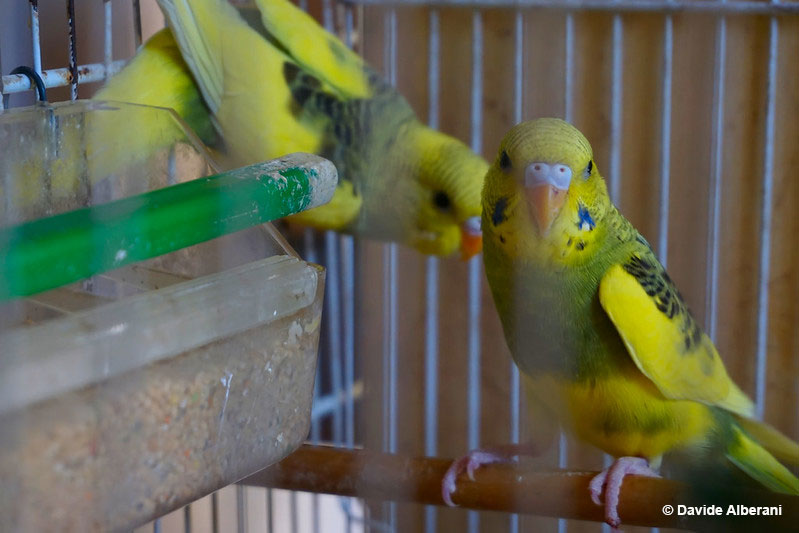
How long do parakeets live? Parakeet lifespan differs by species, but the most common parakeet pet, the Budgie, lives for 7 to 15 years.
On average, this is more than twice as long as their lifespan in the wild. They live much longer in captivity because pet parakeets are cared for and kept safe from falcons, snakes, diseases, and other threats faced by the Budgies that make their home in the deserts and arid lands of Australia.
Parakeets can make wonderful pets and often form bonds with their owners. With that in mind, and the fact that many members of the parrot family live for decades, it’s no wonder that the parakeet lifespan is one of the most common concerns regarding these beautiful birds.
Other common parakeet companions, such as the Ring-Necked Parakeet, Monk Parakeet, and Canary-winged Parakeet can live anywhere from 7 to 35 and 40 years.
Parakeet Lifespan
Parakeets don’t live as long as macaws but if they are given a good home with a good diet, and cared for, many species can live for twenty years or more.
In general, the smallest parakeets have the smallest lifespans, and the bigger ones have longer lifespans. Even so, most pet parakeets are going to live much longer than their wild counterparts simply because their owners keep them healthy and well-fed.
The most commonly kept parakeet is the Budgie or Budgerigar, a cute little, long-tailed parakeet native to grasslands and deserts in Australia. Given a good home, these lovely little birds can live up to 15 years.
Some only live 7 or 8 years, but even then, this is still more than what they would have lived in the wild. Most other parakeet species live longer than Budgies, even the tiny parrotlets.
Related: How long do parrots live?
On average, these pint-sized parakeets, feisty Cockatiels, gorgeous lovebirds, fun conures, and other, similarly-sized species have lifespans of 20 years, but some live to 30 years of age.
Lifecycle
Hatchlings
Parakeets are considered hatchlings from the time they hatch to at least ten days of age. They are naked, have their eyes closed, and totally helpless. They are completely dependent on their mother to keep them warm and are fed regurgitated food. After ten days, they open their eyes and start to grow feathers a few days later.
The young parakeets are then known as nestlings and are still totally dependent on their parents. The small birds eventually grow to become fledglings that flutter and walk.
They become more independent during the weanling stage; around three to four weeks after hatching.
Juvenile
Parakeets are juveniles when they reach eight weeks of age. They are pre-adolescents that look like adult birds but are smaller and don’t have all the colors of full adults.
At this time, the young birds can leave the nest and care for themselves. They don’t need nearly as much care as younger birds because they have feathers to keep them warm, don’t need formula, and can feed themselves solid food.
Young Adult
Parakeets are young adults when they are anywhere from six months to two and a half years old. Young adult parakeets are very energetic, love to play, and are more willing to try new foods.
They are totally independent but love to spend time with other birds or their owner. They look like full adults but up until eight months, they may have dark gray eyes.
Adult
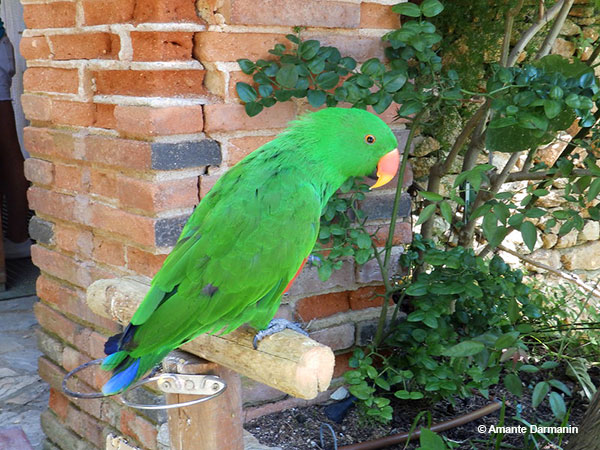
© Amante Darmanin
Adult parakeets have full adult plumage and readily choose mates and lay eggs. This stage of the parakeet’s lifespan is usually from two and a half to six years. Adult parakeets are in the prime of their life and may enjoy playing just as much as younger birds do.
Senior
Depending on the species, parakeets can become seniors anywhere from the age of four to fifteen years. Budgies become seniors at four (females), and six (males).
At this stage, parakeets have much less energy, don’t vocalize, eat, or fly as much as they used to, and sleep a lot more. When they lose feathers, it might also take longer for the new ones to grow back, or they might not grow back at all.
End of life
When a parakeet approaches the end of its lifespan, it may suddenly have more energy, spend more time cuddling with its owner, or even eat more. It might also suddenly play with a favorite toy.
If a parakeet is already quite old and suddenly acts like this, sadly, there is a fair chance it will die the following day.
How To Improve Their Lifespan
Parakeets live much longer as a pet than in the wild but some things can still be done to improve their lifespan.
- A healthy diet. Parakeets should only eat seeds and other foods recommended by parakeet breeders. Although they might take bits of sugary foods or other items they wouldn’t normally eat, such food is very bad for them.
- Talk to and socialize with parakeets. Parakeets are very social and are much healthier when their owner talks to, trains, and interacts with them.
- Bring the parakeet to a vet. One of the best ways to improve its lifespan is to bring the bird to a vet for regular check-ups, or when it shows signs of sickness.
- Let the parakeet fly around. Parakeets don’t have wings for nothing and they love to use them! Letting a bird fly around will keep it healthy and happy.


